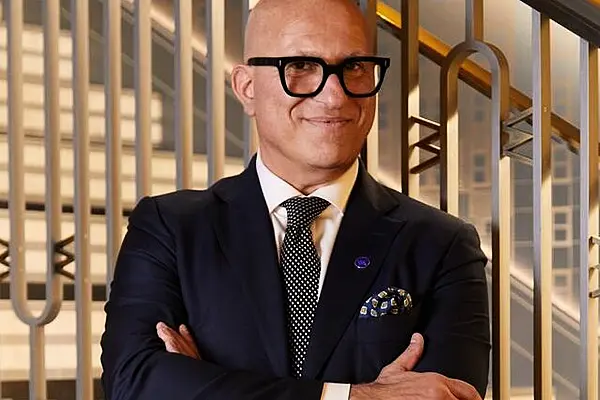This spring, Pernod Ricard's Malibu Rum paid American singer Nick Jonas to host a competition in Vietnam that began with 33 Instagram stars battling to catch fake pineapples while flying off a giant waterslide into the sea.
In one month alone, videos and pictures from the "Malibu Games" were viewed 2.4 billion times online, showing the potential for so-called "influencer marketing" to reach social media-mad consumers that may overlook older, traditional brands.
This kind of advertising, where celebrities and popular bloggers earn money by posting about products, has developed over the past five years on Instagram, Snapchat, Twitter , Facebook and YouTube.
Influencer marketing found early popularity with beauty, fast fashion and fitness brands but has now spread across the spectrum, even though some analysts question whether it actually works.
It accounted for about $1 billion a year of advertising spend on Instagram alone last year, according to influencer marketing agency Mediakix, which predicts the entire market could reach $10 billion by 2020; still tiny in the near $600 billion ad realm, but growing fast.
Thibaut Portal, leader of Pernod's global media hub, said influencer marketing was playing a "growing and key role" in the French spirit maker's campaigns and was in use on all its major brands.
Influencers give Pernod more options for spending marketing dollars online, an important destination for liquor companies which have restrictions on television advertising in some places, such as France.
Sometimes brands use social media stars with millions of followers to drive awareness of a brand, but other times pick "micro-influencers" with thousands of followers who, as experts in their industry, can impact choices.
"We are not interested in working with big, massive influencers with four or five million followers [when] the week after, the same influencer is going to post a picture of a washing machine," Portal said.
The rapid growth of influencer marketing shows how the broader ad industry is changing, as brands struggle to reach consumers in a world of fragmented content on the internet, now the biggest platform ahead of TV.
Brands will pay anywhere from $10,000 to more than $100,000 for a single social media post, experts say, depending on the size, engagement and loyalty of the person's followers. This can buy online content more cheaply than traditional advertising.
Pernod is far from alone in using the technique, with fellow consumer giants like Unilever, Nestle and Mars all testing the waters. Pernod declined to say how much of its €1.7 billion marketing budget it spent on influencers, but Unilever said it accounted for "tens of millions" of its €7.7 billion marketing last year.
However some analysts question whether a viral video clip seen millions of times actually lifts sales.
Influencers can also artificially enhance their audience numbers - which often dictate their fees - by purchasing fake followers, machine-generated profiles fuelled by "bots". This was highlighted last month when Unilever said it would cut ties with influencers that buy followers.
"If it was a child before, it's a teenager now, and it's got to grow up quickly," Neil Waller, co-founder of influencer marketing platform Whalar, said about the fledgling advertising area.
Cut Out Middleman
Pernod credits Malibu's social media presence for helping to invigorate the brand, whose sales volume grew in each of the past three years, according to researchers IWSR, after falling the previous two.
The Malibu Games mostly featured people whose notoriety centres on social media. Besides singer Jonas (15.4 million followers on Instagram), participants included Sierra Dallas (1.2 million), Alba Paul Ferrer (878,000) and Rory Kramer (483,000).
The influencers posted about their experiences of the three-day event, including enough short video clips to make up over four hours of footage. A teaser video was watched 10 million times, the company said.
Getting creative content directly from influencers also allows brands to skirt the middleman, traditional ad agencies owned by the likes of WPP, Omnicom, Publicis and IPG.
Nonetheless, agencies are using the tactic too.
"We're deeply involved in it, when creative agencies launch campaigns there will be an influencer element in it," Jonathan Nelson, digital boss of the world's second largest ad company Omnicom said. "These are tailored experiences for you."
Research by Accenture found that 53 percent of consumers aged 18 to 34 were loyal to brands that partnered with social influencers, compared with just 8 percent for those over 55. According to e-commerce analytics firm L2, 72 percent of Instagram users report making purchase decisions based on something that they saw on the site.
Unilever Chief Marketing Officer Keith Weed said he expected influencers to take a growing part of his budget.
"We see it as a very powerful vehicle ... creating very authentic real-time content at a much lower price," Weed told Reuters. "The way it penetrates the culture, I really do think it's going to be a big and vibrant market."
Mars, another major advertiser, is also a fan. It divides its ad budget, with 80 percent going on proven campaigns and media, 15 percent in areas that are unproven but where there is a method of measurement, and 5 percent on total experimentation.
Influencer marketing falls into both the biggest and the second-biggest categories depending on the type of campaign.
Goat, a nearly three-year old agency that works with around 40,000 influencers, helped recruit members for the Malibu Games, opting for stars with a broad, young appeal.
"The key is can they influence their audience," co-founder Arron Shepherd said. "With Malibu we're looking to make it the number one drink that people think of in the summer."
News by Reuters, edited by Hospitality Ireland. Click subscribe to sign up for the Hospitality Ireland print edition.









